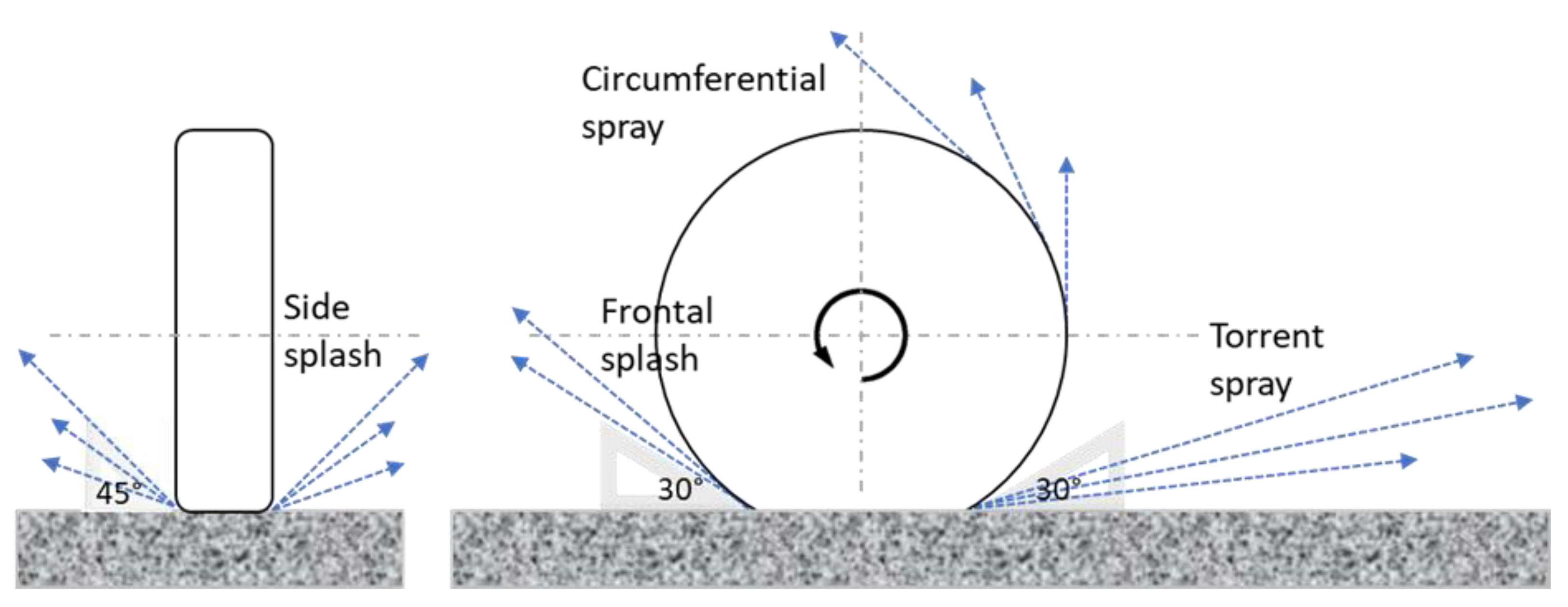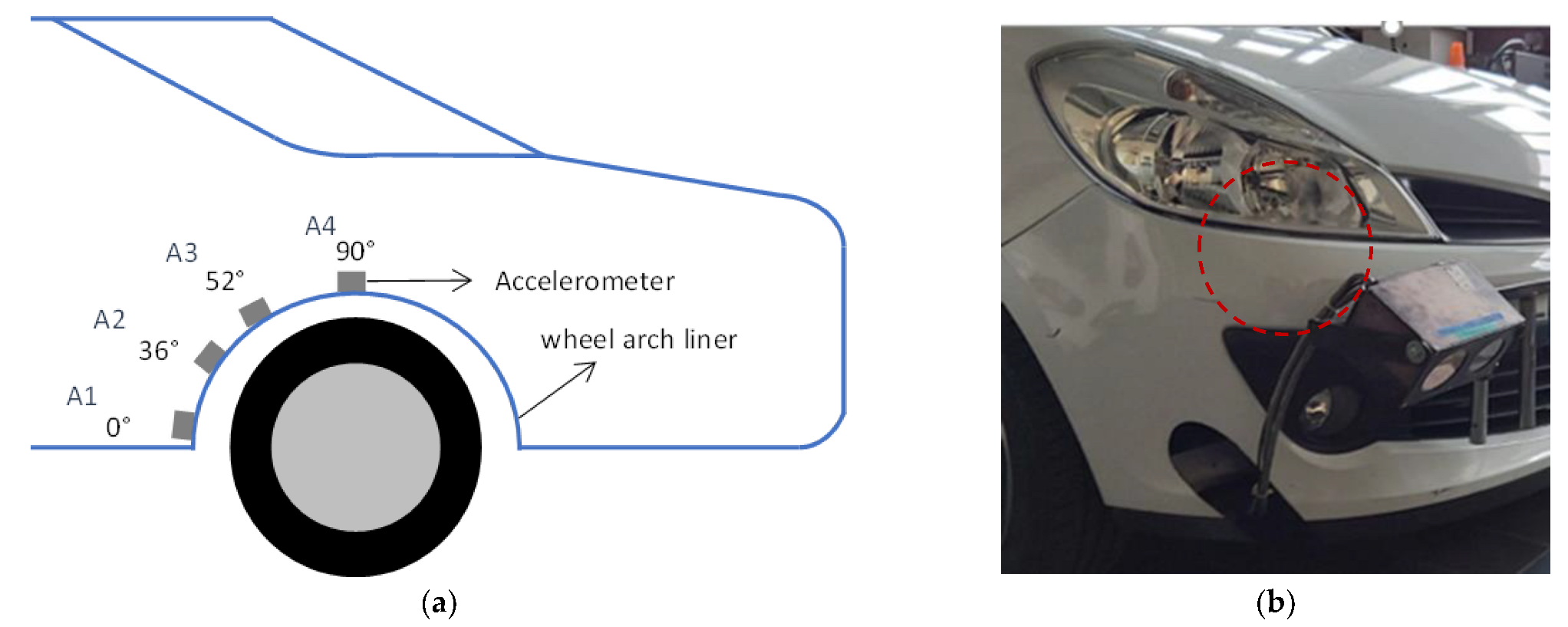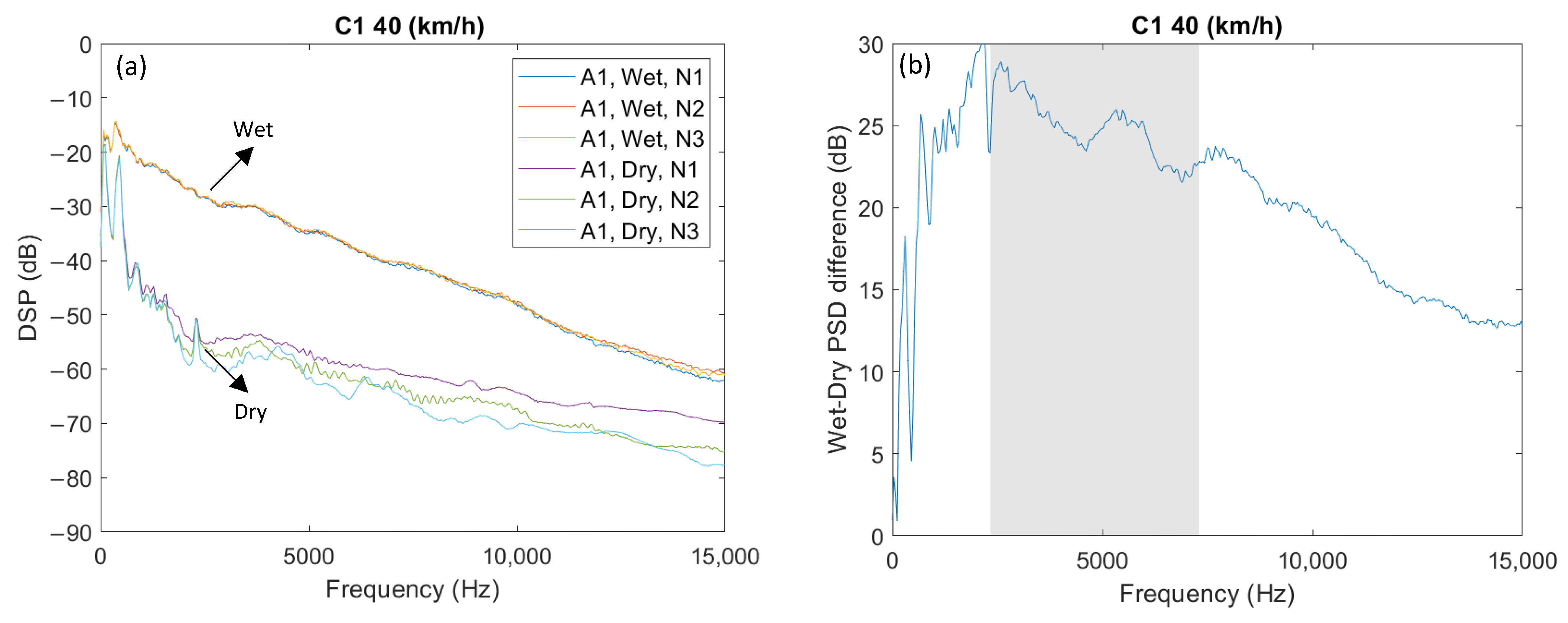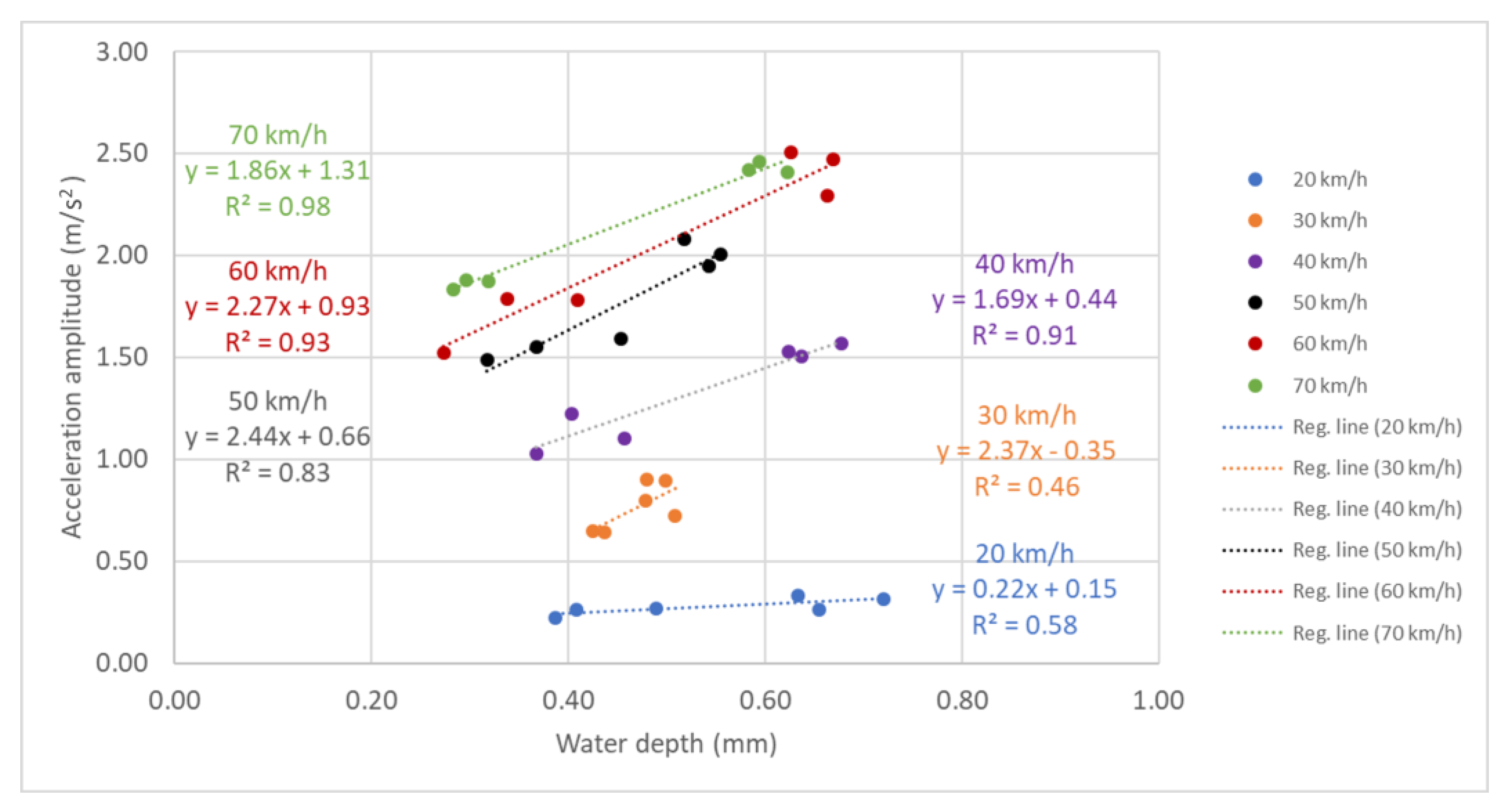On-Board Evaluation of Pavement Wetness from Water Spray †
Abstract
:1. Introduction
2. Methodology
3. Experiments
3.1. Sensors
3.1.1. Accelerometers
3.1.2. Optical Sensor to Measure Water Depths
3.2. Test Tracks
4. Results
Signal Processing
5. Conclusions
Author Contributions
Funding
Institutional Review Board Statement
Informed Consent Statement
Data Availability Statement
Conflicts of Interest
References
- McCarthy, R.; Flintsch, G.; de Leon Izeppi, E. Impact of skid resistance on dry and wet weather crashes. J. Transp. Eng. Part B Pavements 2021, 147, 04021029. [Google Scholar] [CrossRef]
- Do, M.-T.; Cerezo, V.; Beautru, Y.; Kane, M. Modeling of the connection road surface microtexture/water depth/friction. Wear 2013, 302, 1426–1435. [Google Scholar] [CrossRef]
- Yu, M.; You, Z.; Wu, G.; Kong, L.; Liu, C.; Gao, J. Measurement and modeling of skid resistance of asphalt pavement: A review. Constr. Build. Mater. 2020, 260, 119878. [Google Scholar] [CrossRef]
- Prevost, D.; Cerezo, V.; Do, M.T.; Chabanon, C. On-board estimation of water depth using low-cost sensors. In Proceedings of the SURF 2012 (7th Symposium on Pavement Surface Characteristics), Norfolk, VA, USA, 19–22 September 2012. [Google Scholar]
- Schmiedel, B.; Gauterin, F.; Unrau, H.-J. Road wetness quantification via tyre spray. Proc. Inst. Mech. Eng. Part D J. Automob. Eng. 2018, 233, 28–37. [Google Scholar] [CrossRef]
- Döring, J.; Beering, A.; Scholtyssek, J.; Krieger, K.-L. Road Surface Wetness Quantification Using a Capacitive Sensor System. IEEE Access 2021, 9, 145498–145512. [Google Scholar] [CrossRef]
- Riahi, E.; Edjeou, W.; Buisson, S.; Gennesseaux, M.; Do, M.-T. Estimation of water depth on road surfaces using accelerometric signals. Sensors 2022, 22, 8940. [Google Scholar] [CrossRef] [PubMed]
- Weir, D.H.; Strange, J.F.; Heffley, R.K. Reduction of Adverse Aerodynamic Effects of Large Trucks; Report FHWA-RD-79-84; Federal Highway Administration: Washington, DC, USA, 1978.
- Schmiedel, B.; Gauterin, F. Tire Splash and Spray Directly before and during Hydroplaning. Tire Sci. Technol. 2019, 47, 141–159. [Google Scholar] [CrossRef]
- Holzwarth, F.; Eichhorn, U. Non-contact sensors for road conditions. Sens. Actuators A Phys. 1993, 37–38, 121–127. [Google Scholar] [CrossRef]





Disclaimer/Publisher’s Note: The statements, opinions and data contained in all publications are solely those of the individual author(s) and contributor(s) and not of MDPI and/or the editor(s). MDPI and/or the editor(s) disclaim responsibility for any injury to people or property resulting from any ideas, methods, instructions or products referred to in the content. |
© 2023 by the authors. Licensee MDPI, Basel, Switzerland. This article is an open access article distributed under the terms and conditions of the Creative Commons Attribution (CC BY) license (https://creativecommons.org/licenses/by/4.0/).
Share and Cite
Riahi, E.; Edjeou, W.; Gennesseaux, M.; Buisson, S.; Cerezo, V.; Do, M.-T. On-Board Evaluation of Pavement Wetness from Water Spray. Eng. Proc. 2023, 36, 18. https://doi.org/10.3390/engproc2023036018
Riahi E, Edjeou W, Gennesseaux M, Buisson S, Cerezo V, Do M-T. On-Board Evaluation of Pavement Wetness from Water Spray. Engineering Proceedings. 2023; 36(1):18. https://doi.org/10.3390/engproc2023036018
Chicago/Turabian StyleRiahi, Ebrahim, Wiyao Edjeou, Manuela Gennesseaux, Sebastien Buisson, Veronique Cerezo, and Minh-Tan Do. 2023. "On-Board Evaluation of Pavement Wetness from Water Spray" Engineering Proceedings 36, no. 1: 18. https://doi.org/10.3390/engproc2023036018
APA StyleRiahi, E., Edjeou, W., Gennesseaux, M., Buisson, S., Cerezo, V., & Do, M.-T. (2023). On-Board Evaluation of Pavement Wetness from Water Spray. Engineering Proceedings, 36(1), 18. https://doi.org/10.3390/engproc2023036018








